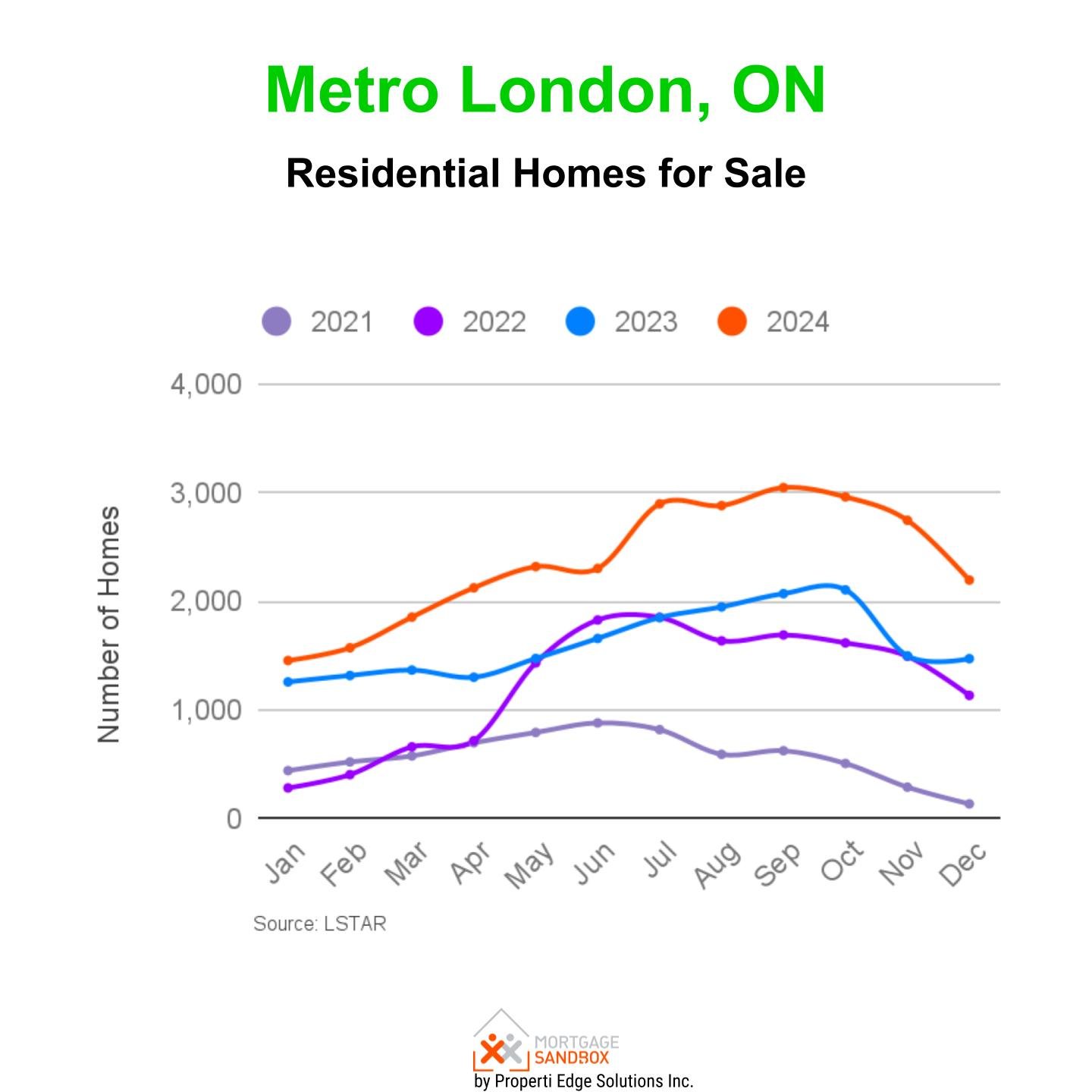2024 Market Recap for London, Ontario
The housing market in Metro London, Ontario, has ended 2024 in a state of flux as the region grapples with a convergence of factors that have left buyers, sellers, and policymakers in a holding pattern. Purchase and sales activity remained stubbornly 30% below pre-pandemic levels, highlighting the ongoing recalibration of a market that once soared to unprecedented heights.
Post-Pandemic Adjustments
London’s housing market hit its zenith in 2021, driven by pandemic-era demand that propelled the benchmark house price to $838,700 and the benchmark apartment price to $503,400.
However, the post-pandemic landscape has been less forgiving. Prices tumbled over 20% after the pandemic, bottoming out in December 2022. The benchmark house price sank to $603,900, while apartments fell to $376,300.
Although prices have since clawed back some losses, the market has yet to regain its footing.
Except for a boost at the end of 2024, purchase demand has been tepid, even as mortgage rates have eased from their peaks. The late 2024, jump in sale might be the result of motivated sellers who were unable to sell in Spring and didn’t have the financial capacity to hold out until Spring 2025. This would explain the drop in the median property prices.
Meanwhile, supply has been steadily increasing, driven in part by a construction boom that began during the pandemic and has not abated.
The Mortgage Puzzle
Falling mortgage rates, typically a catalyst for increased demand, have failed to reignite the market to pre-pandemic levels.
Qualifying 5-year fixed mortgage rates are expected to remain near current levels for the next two years, suggesting that London’s housing market may be in for a prolonged period of stagnation.
While rates are down from their highs, borrowing costs remain elevated compared to the decade before 2022, keeping some potential buyers on the sidelines.
Key Risks Shaping the Market
Several risks loom large over London’s housing market as it navigates uncertain waters:
Construction Overhang
Construction activity surged by 50% during the pandemic and has remained elevated despite cooling demand. Housing starts in 2024 outpaced the previous two years, potentially oversupplying the market and pushing it further into a balanced state. This dynamic could suppress price growth if demand does not pick up.
Migration Shifts
London has long been a refuge for Canadians escaping the high costs of Toronto and Hamilton. However, recent federal cuts to immigration may ease affordability pressures in those cities, reducing the flow of new residents to London. While this policy may seem prudent amid weakening full-time employment prospects, it raises questions about whether London can sustain price growth without robust population increases.
Employment Concerns
Ontario’s full-time employment growth has slowed markedly, a troubling sign for housing demand. Employment is a key prerequisite for homebuyers, and without a strong labor market, demand in London is likely to remain lukewarm.
Softening Rental Market
Rent rates in London have declined by 5% over the past year—even before the implementation of immigration cuts. This trend could deter buy-to-rent investors, who may opt to wait for the market to digest the full impact of shifting immigration policies.
Upside Risks
Despite these challenges, there are reasons for cautious optimism:
Affordability Edge
London remains more affordable than any other major Ontario city of its stature. Relatively few buyers are sidelined by cost constraints, providing a potential cushion for demand.
Mortgage Relief
While still high by historical standards, mortgage borrowing costs have eased, offering some relief to potential buyers.
A Market in Transition
London’s housing market is a tale of competing forces. On one hand, rising supply, muted demand, and shifting migration patterns present significant headwinds. On the other hand, relative affordability and easing mortgage rates offer a glimmer of hope.
For prospective buyers looking to settle in the region, the current market offers an opportunity to purchase at prices well below the peak.
However, for those viewing London property as a low-risk, high-return investment, caution may be warranted. The market’s future trajectory will hinge on a delicate balance of supply, demand, and broader economic conditions—factors that will require close monitoring in the years ahead.













